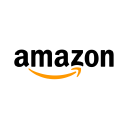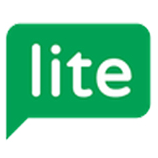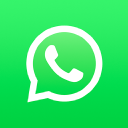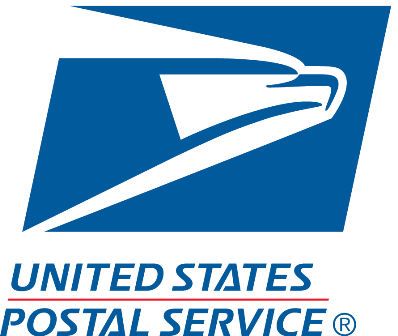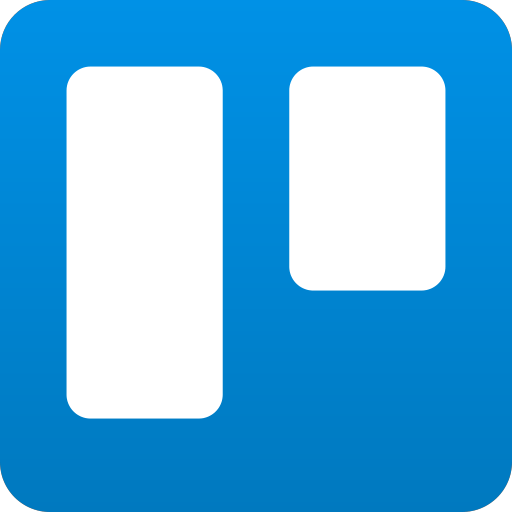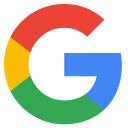On Creating A Mood Tracking App With 50K Active Users
Hi! My name is Jon Stavis and I’m the creator of eMoods, a simple but effective journaling and mood tracking application. eMoods helps people make sense of their mental health symptoms and live fuller lives. This company grew from a hobby project that I started to improve my own mental health and has since grown to reach over 50,000 active users.


eMoods is a free mobile app that allows people to quickly capture their highs and lows of each day for many symptoms related to mood and anxiety disorders such as Bipolar, PTSD, and Depression. Data relating to these symptoms, sleep, medications, and any other factors being tracked can be visualized in graph or printable format, and easily shared with a doctor, therapist, friend, or family member.
Using these visualizations and sharing with a caregiver can help spot unhealthy thought patterns and zero in on triggers and other factors that could lead people to a major mental health relapse or hospitalization. Spotting these patterns and being aware of their own mental states has also helped many app users:
- Reduce their medications that often come with severe side-effects
- Improve the efficiency of their short doctors’ visits by having a concise summary of their symptoms
- Empower them to communicate better with their doctors and reduce the frequency of these visits, saving money and insurance costs
- Prevent hospitalizations by communicating with their doctors early when warning signs come up

The business model is freemium, or “patronage” based. The free app offers more than enough quality features to be effective in helping people suffering from these disorders, however, the voluntary upgrade does provide a lot of cool added features and extra customization. A portion of all profits is donated to mental health-related charities.
The major draws for using this app goes hand-in-hand with our mission as a company:
1) An obsession with privacy - eMoods stores data only on people’s phones. There is no login and the app will work in airplane mode indefinitely if desired- no data is stored on any server or ever transmitted off someone’s device without them explicitly asking for it to be.
We believe that every software product should come with this level of transparency, but for something having to do with mental health, not having this level of privacy is a nonstarter. The users of this product often feel uncomfortable sharing personal details about themselves, and people must know that their personal data is sacred and theirs and theirs only if that’s what they want.
2) Ease of use and distraction-free - eMoods aims to not waste people’s time. Your time is precious and being in and out of the app in seconds is the critical focus; people can open the app quickly when a symptom comes up, log it, and move on with the more important parts of their day.
3) Respect for users - this is the cornerstone of the brand of eMoods. Everything we do respects users before anyone else- before their doctors, their therapists, the government, partners, friends, family, etc. This is a marginalized community- even sometimes by the people ostensibly helping them- and in some cases, they don’t get this priority of respect from anyone anywhere else.
We believe in neurodiversity and that these oftentimes stigmatized mental states should be celebrated and those with them often have the most gifted minds in the areas of spirituality, science, entrepreneurship, and empathy.
We believe that anyone can approach their mental health treatment in whatever way they choose, but the common thread between any treatment approach is self-awareness. And we believe that self-awareness can be practiced through diligent journaling and tracking of symptoms, medications, sleep, and other factors.
eMoods became profitable enough for me to leave my full-time job in 2019 to focus on this company while still supplementing with some side contracting work. Since then I have built a team of great people who equally care about this mission of helping this community and improving lives.
What's your backstory and how did you get into entrepreneurship?
I never really thought much about being an entrepreneur from a young age, but I always had a sense that large companies and their influence over how we live our lives was not something I wanted to invest my time and talents in. I couldn’t see how it was possible for someone who worked at a company of hundreds or thousands of people to take a caring interest in the customer or community. I think this may be why most of my early jobs as a programmer were for startups or companies in the entrepreneurial space.
Under the surface most people are struggling with their own problems just like you. Take care of yourself and enjoy the journey while eyeing your goals.
Circling back to eMoods specifically, I was (and am!) one of the people that this app was set out to help. Being diagnosed with Bipolar 1 in my early 20’s, I was very frustrated with the diagnosis and figuring out which medications worked for me- I tried upwards of 20 different medications, all with terrible side effects, before settling on those with the most bearable ones. But I felt that my mania and psychosis also came with a spiritual side and that I was being pathologized and forced by a western medical system, family, and societal obligations to be “normal”. I believe we as a society talk more openly and with more acceptance about mental health issues these days (nearly 20 years later), and my views now align with the neurodivergent community, which celebrates neurodiversity in all its forms - this includes autism, ADHD, bipolar, schizophrenia, and other atypical neurodevelopmental states. At the core, I want users of this app to be in control of their health because I felt like I wasn’t in control for a long time.
About 8 years or so into living this way I decided that I’d had enough of the big city I was living in, the lack of connection to nature, and my sense of obligation to maintain this “sane” veneer to the world that felt unnatural. I left my job as a programmer in New York City in 2009 and traveled to New Zealand to work on a series of small farms for 6 months and take stock of what to do next. I say this as an extremely privileged person who was fortunate enough to come from a stable family and have a well-paying job for several years that afforded me this opportunity. I am definitely aware of the irony that the very mental health treatment I was rejecting helped me to get to a place of relative comfort and allowed me to try to distance myself from it.
While out in a more natural setting, surrounded by trees and under the stars every night, picking berries, feeding pigs, chopping wood, and carrying water, I saw some of the simple beauties of this world that so easily get overlooked in our modern lives. I honed my sense of self-observation and began keeping meticulous track in a simple paper notebook of every single symptom that I’d come to learn about over the last 8 years: my sleep and sleep quality, physical activity, diet, and of course medications. And over time, as I became more aware of my mind and body I started feeling a lot better.


During this process, and after doing my farm work each day, I started reading up on Android programming, which was pretty easy for me to pick up as a Java web developer at the time. I decided that I’d make a mobile app that could help me track all this stuff I’d been keeping track of in a paper journal, and began coding it up for fun.
When I returned to the United States in 2010 however, I found myself back in the same unfulfilling situation- out of nature, living in an expensive city, and needing to return to work as a programmer to afford living there. I started seeing a new doctor who explicitly requested me to fill out a paper mood journal. The app was almost finished, and the last touch was having it generate a report that I could send to him to print for my file.
Having the app made things a lot easier than keeping a notebook on me all day, and I enjoyed using it. I put the app in the Google app store later in 2010, and as time went by more and more people started using it- and liking it! Nothing much came of it as a business- I wanted to continue offering the app for free, and I didn’t even understand at the time that there were other business models somewhere between free and paid. Not to mention, I was too afraid to even associate my name with this app for fear of being outed and stigmatized as having a severe mental illness. I don’t think that most entrepreneurs are faced with being afraid to put their own name to their business, and this was tough for me to overcome.


Fast forward about 6 more years to 2016. I was doing contract programming work for an online company that taught people how to start a Software-as-a-Service company. Starting my own company had become something I wanted to do, which was what gravitated me towards this contract role. I was surrounded by enthusiastic and inspirational entrepreneurs. One day I finally worked up the courage to start talking about this side project of mine, and how it had thousands of users and a great app store rating. It was as if the printing presses stopped and all at once these co-workers of mine admonished me for not having turned this into a real business yet.
As a result, I started by adding a donation button to the app. And to my surprise, people started donating because they liked the app so much. I used this validation to hire a designer friend of mine to give eMoods a tune-up. We made the app design look more attractive, worked on some additional features and a premium upgrade option, and began working on a new iPhone and Android version. I launched this new version in 2017 and people liked it even more than the previous version. Now, most marketing is through app store optimization and word-of-mouth from users to their doctors/therapists and doctors/therapists to their other patients and clients.

Take us through your entrepreneurial journey. How did you go from day 1 to today?
I had some exposure to entrepreneurship through my first few jobs and I knew that small businesses were a much more flexible container for doing work and contributing towards shaping a world that aligns with your own principles.
The idea for the eMoods app sprang from a personal need and I think that when you design something to scratch your own itch, so to speak, it often comes out being exactly what you need. And if it’s genuine, you’ll be surprised by how many other people like you have the same need in their own lives.
The app is pretty simple which made the initial coding straightforward- I just tried to keep in mind all the design principles that were important to me, namely privacy, ease of use, and respect for the user. I worked on it as a hobby and put it live in the app store just for fun. It wasn’t until years later that this little hobby app was popular and I decided to try to make a business out of it. This decision came with some helpful nudges from other entrepreneurs I was working with as a contractor at the time. It also came after years of trying to keep my identity anonymous as the creator of this, for fear of stigmatization as I was quite secretive about my mental illness.
Some validation took place when we added a donation button to the app to see if people would be willing to spend money on it. It turns out they were, leading me to work with a designer friend to make the app look really nice, good user experience, and keep it free while adding some upgrade features. We relaunched in 2017 and the much-improved version caught on very well.
Even though many people loved the high level of privacy that the app provided, more and more users were requesting features like cross-device syncing, predictive analysis, and healthcare providers looking to view their patients’ live data. None of this could happen easily with the app having only offline data storage, which led me to begin working on a new cloud-based version of eMoods in 2019, which will eventually become a HIPAA compliant enterprise platform for medical and therapy practices. I received two matching grants from the Maine Technology Institute for further developing this platform and beginning to build a team. The cloud app, called Insights, is now live, and the HIPAA compliant enterprise side of things should be live later this year.
When the pandemic hit we also launched a spinoff app called eMoods Wellness Tracker, which lets people track their daily wellness activities related to social distancing and quarantine. This app is slowly catching on but we haven’t put a ton of marketing effort into it.

I’m now running a loosely connected team consisting of a handful of part-time contractors: programmers, customer support, content writers, marketers, designers, and bizdev/product management. We are aiming to make a first full-time hire of business development and product management team member later in 2021.
How are you doing today and what does the future look like?
eMoods has been profitable since making back the $25 Google Play Store developer fee that got things started. Things became profitable enough for me to leave my full-time developer job in 2019 and take on some part-time contracting while further growing this business. Expenses now mostly include contractors and various software tools.
Operations today include supporting existing users with obsessive customer service, feature development on the Classic iPhone and Android apps, but most development on the Insights platform and the upcoming HIPAA compliant Enterprise portal for doctors’ and therapists’ practices. There’s been a lot of learning about the legal requirements of HIPAA and working towards a suitable hosting and DevOps setup. Supporting existing users is so important, and I don’t know anyone running a free software tool that provides this level of direct customer support.
Working on Insights is the big push for growth to new audiences and regions. It’s much more richly featured than the Apple/Google mobile apps and will eventually be a portal for medical practices. Insights pulls external data from various sources, including weather, temperature, daylight hours, and even moon phases if the user chooses. Many of these external factors have been studied and proven to affect different symptoms of these mood disorders. This allows users to correlate this data with their logged symptoms to get a sense of how these external factors can affect their mental health and wellbeing. Simple machine learning also is used to point out correlations that may not be visible to the naked eye. More sophisticated machine learning to be released in the future will provide statistical predictions for how likely it is that a user may log a certain severity of a certain symptom.

Through starting the business, have you learned anything particularly helpful or advantageous?
The first thing that comes to mind here is that I’ve learned luck and privilege are paramount to starting a business and making it successful. I hear a lot of people saying that if you just work your ass off you can get ahead. Hard work is of course important but it’s clear to me that most of the time hard work is not enough. My economic background, race, gender, and having a strong support system to bounce back from a debilitating mental illness put me into the unique position to create even a hobby business- most people aren’t this fortunate and if you’re any kind of entrepreneur, I believe that you shouldn’t take this for granted.
The hard truth is we live in an unbalanced world filled with mega biases, and starting a business, let alone a technology business, is often something that is just not available to most people. Figuring out how to honor this hard truth, have gratitude, and lift someone less fortunate than myself has been the hardest challenge as an entrepreneur. If this isn’t my primary focus on my path to becoming a successful entrepreneur, I believe that I’m missing the target.
The second thing that comes to mind is learning how important it is to develop patience and positive communication skills. The people working with you, both partners and users, are their own individuals and they’re going to do things their way a lot of the time, ie. not the way you expected or were magically hoping for. And that’s ok! The key, I believe, is to communicate your vision and your moral compass, and clearly define tasks, get feedback, and be flexible if things don’t turn out your way. Even big mistakes can be forgiven, and when you look at that huge mistake that a contractor made 6 months later, it doesn’t mean squat anymore. That contractor/employee is still a great partner who contributes meaningfully to your mission.
Lastly, coders tend to overthink technology choices and architectures, myself included. I learned that it’s ok to use what you like and what you’re comfortable with. I’m kind of a coding dinosaur when it comes to the latest and greatest developer frameworks and hosting services- I like to go with what works well and gets me from point A to point B the fastest, and I learned to be ok with that. Insights was originally written on Google Firebase but that platform was hard to work with for my personal thought process, and DevOps was a challenge despite the promises of an easy-to-use serverless architecture. As a result, we recently ported Insights off of Firebase and onto a Laravel/MySQL architecture, and all I have to say is it’s been a delight working on this new platform. Likewise, both the Apple and Google apps are native code (Swift and Java). Apple and Google have designed great platforms that are mostly straightforward and easy to use- I felt no need to use any additional coding abstractions or cross-platform frameworks. I repeat- Do Not Overthink Your Technology Choices and Go With What You Like Best!
What platform/tools do you use for your business?
The Apple and Google Play developer consoles have been great, but being able to run A/B store listing experiments on Google Play has been invaluable, and results seem to translate well to the Apple store too (this is a feature that Apple doesn’t have).
Customer support is such a critical cornerstone to eMoods’ mission and Helpscout has been a great tool for that. Helpscout has allowed a small team consisting of myself and two other customer support contractors to stay in sync and be on top of all email inquiries that come in. It also has a nice help documentation system that plugs right into the main eMoods marketing website.
The Laravel web framework and Laravel tools like Forge and Nova have helped tremendously with making development and DevOps a lot easier. Laravel was such a pivotal shift in web development for me back around 2012, allowing me to develop web applications in a fraction of the time and with fewer people than in the early 2000s (again, I did say I was a coding dinosaur!).
We use RevenueCat for in-app payments. They’ve developed a very nice abstraction on top of the Google and Apple in-app purchase system, as well as Stripe. This service makes the coding part of in-app payments a whole lot easier.
We recently switched from MailChimp to MailerLite and it has been fantastic for newsletters and drip campaign/marketing emails. The price is right compared to MailChimp, the interface is very simple and works well for several team members collaborating, and their customer support is great.
What have been the most influential books, podcasts, or other resources?
Deep Work: Rules for Focused Success in a Distracted World - This book separates all work into two categories: “Shallow Work”, or work that is not important to your broader mission and “Deep Work”, the work that is critical to furthering your long-term goals. It outlines inspiring reasons why being mindful of this distinction is important and gives actionable steps to maximize the time you get to spend on work that is important and meaningful for you.
Don’t Make Me Think: A Common Sense Approach to Web Usability - This book has been by far the most life-changing thing I’ve read on User Experience and Design. All good design boils down to the notion of valuing people’s time, to the point of not making them even have to think to figure out and get value from your software. This is more a design manual than an in-depth book, and it only takes a few hours to finish the whole thing.
Sapiens: A Brief History of Humankind - I read this book right after my second son was born and it’s been one of the most impactful things I have read in my life. This is a small planet and we as humans have made an incredible impact in a short period of time, for better or worse. Knowing where we came from and how we developed our civilization has helped me a lot to try to build understanding with others.
Lucky Man: A Memoir - One of Michael J. Fox’s more noteworthy characters, Marty McFly, was a childhood idol to me. This is one of Fox’s books humorously discussing his coming to terms with a debilitating chronic condition, how it reshaped his life and led towards his deep sense of gratitude, and how being vulnerable can be a healing medicine.
The Electric Kool Aid Acid Test - Because we’re all a little crazy and life should be a good time. Besides recounting the psychedelic drug-filled travels of a hippy prankster group, this book offers some gems of wisdom about what life is really about, how we so often fail to live in the moment, and how we find ourselves doing things without having the slightest reason why.
Advice for other entrepreneurs who want to get started or are just starting?
Listen to your users! Respond to every single review or email that you get, within 48 hours (or sooner!), and respond as if you were catching up with a close friend. Listen, understand concerns, give a shit, and BE TRANSPARENT! Transparency is so important, even if you’re telling someone something they don’t want to hear. I can’t emphasize how much I learned by trying to build trust and understanding with users. In fact, they are way more than users or customers. They are helping you learn about yourself and the similarities you have with them, and in turn how you can design the best product for everyone. And at the end of the day, perhaps you added a small spark of hope, joy, or compassion to someone’s life.
Take it slow and go easy on yourself. As the saying goes, it’s a marathon, not a sprint, and this is so true. You’re going to encounter competitors and other entrepreneurs who seem more successful than you and in a quicker time period. Don’t worry about them and keep your mind and body as healthy as you can to stay on target. Under the surface, most people are struggling with their own problems just like you. Take care of yourself and enjoy the journey while eyeing your goals.
Where can we go to learn more?
Go to the eMoods website to download the app or create an Insights account (you can track your moods even if not managing Bipolar-related symptoms!)
Contact me by email.
Follow me on Instagram and Twitter.
You can follow eMoods on:

Download the report and join our email newsletter packed with business ideas and money-making opportunities, backed by real-life case studies.

Download the report and join our email newsletter packed with business ideas and money-making opportunities, backed by real-life case studies.

Download the report and join our email newsletter packed with business ideas and money-making opportunities, backed by real-life case studies.

Download the report and join our email newsletter packed with business ideas and money-making opportunities, backed by real-life case studies.

Download the report and join our email newsletter packed with business ideas and money-making opportunities, backed by real-life case studies.

Download the report and join our email newsletter packed with business ideas and money-making opportunities, backed by real-life case studies.

Download the report and join our email newsletter packed with business ideas and money-making opportunities, backed by real-life case studies.

Download the report and join our email newsletter packed with business ideas and money-making opportunities, backed by real-life case studies.

